“Feisty earns his mudflaps”
It’s time for a suspension update that I hope you all will like! (This is going to be a long one)
I have also made a separate post on it here for more technical discussion and questions, without the long story and also included a parts list there.
Custom Rally Springs for Stock/B6 suspension!
https://www.fiestastforum.com/threa...ce-springs-for-oem-b6-style-suspension.30829/
So while prepping for a recent backpacking trip, which involved driving about 12 miles each way on a very infrequently maintained dirt road, I realized that the stock spring setup combined with the 2-point pierce brace I have installed simply wasn’t going to quite cut it for ground clearance. The road in question wasn’t exactly what you’d call “rally stage” or 4-wheeling terrain, but there were plenty ruts, washboard and washed out sections to make me worried, and it was a bit dicey in the bone stock Honda Fit I was driving then.
The first option I considered was swapping out for some stock fiesta springs, but I really was not happy with the idea of a soft spring setup. With some of the discussion on the forum about offroad mods, stiffer spring options with stock ride height, and ways to make something closer to the Swift spring rates, I decided I wanted something better.
Before you read the nitty gritty details below, the short version is that I came up with a ~$350 spring setup using 225F/200R rates that turned out to sit pretty close to stock ride height. I was shooting for a bit of a "rally" lift to get some extra ground clearance, but you get what you get, and it ended up being enough for this trip (might have been a little sketchy coming out if it hadn't waited to rain until the day after we got home!)
Here are some pics In the left one, there's a load of backpacking gear in the back, the right is unloaded. Note that my snow tires are 1" larger than stock diameter (also for additional ground clearance), so they fill the wheelwells a little more than the stock diameter wheels do.
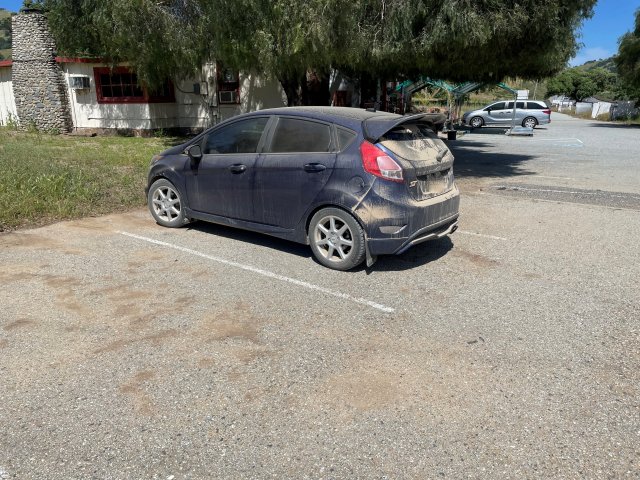
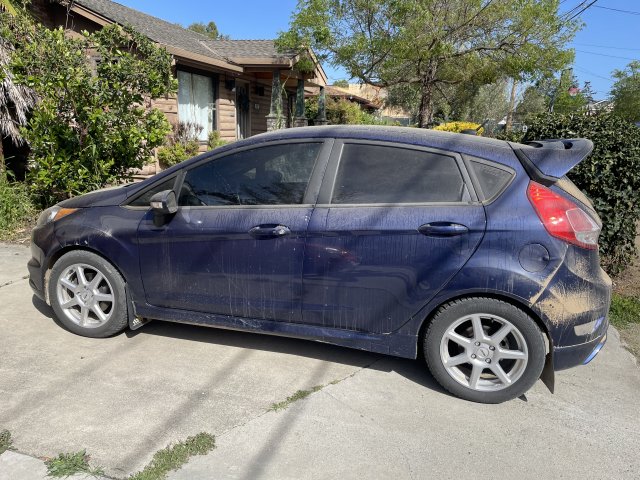
For comparison, here's a snapshot I dug up of the car on mismatched (2014F/2019R) Stock springs. I have a hard time telling the difference in ride height:
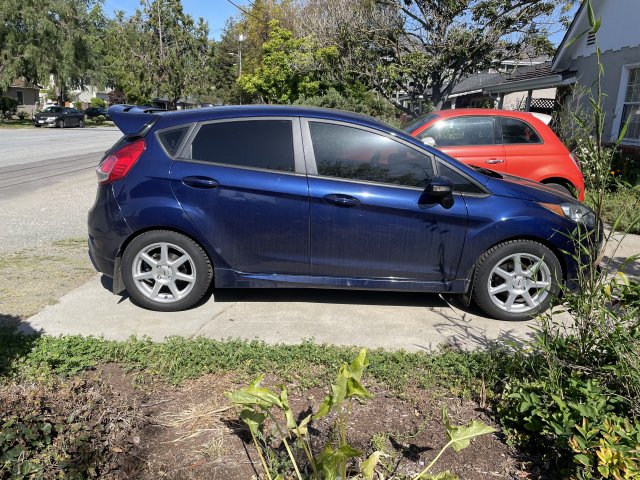
I’ve been slowly working on a different custom suspension setup which has involved a whole bunch of measurements and a bit of spreadsheet math. In the process, I came to the realization that the FiST’s stock spring pigtails are actually very close to some standard coilover spring sizes, so I embarked on a side project - stiffer springs with stock to lifted ride height!
First, the easy one is spring diameters - as evidenced by the B14 setup and thanks to info from
@kevinatfms, the rear springs are basically drop-in for standard 2.5” ID coilover springs. Second, and more interesting, the front spring pigtails and isolators are *almost* exact dropins for 3.0” ID coil springs. While 3.0” is not nearly as common, it is used for some large-body 2.5” diameter off-road shocks (Fox, etc), so there are choices available.
The second problem is that the stock struts (and B6’s) have approximate droop heights (preloaded spring lengths) of ~10.5” Front and ~11.25” rear. (B8’s have a shorter droop height). The problem you run into as you use a stiffer spring than stock is that the correct free length to get the ride height you want is shorter than that droop length, and your springs fall out after the first big bump you go over, trashing your shocks in the process! Your springs need to be a tad longer, with preload to spare. Enter helper springs or helper coils. If you look at like 90% of lowering springs in existence, in order to stiffen the spring and/or drop the ride height, the main spring’s free length needs to be even shorter, so they need to build in soft helper coils to keep the spring preloaded. (Which is why it's very hard to tell progressive and linear+helper lowering springs apart just visually).
The main problem you then run into with a coilover spring setup is that top of the line helper springs and standard coilover springs together will break the bank. My first attempt to price them out with common higher end Swift/Eibach/Hyperco springs and helpers came in at a ridiculous $800, which is a no go on top of the cost of B6’s when you can look at decent coilovers for that price ($1400-$1600). So I scrounged and searched a bit harder into lesser known and off-brand deals. The final version, using brand new components comes in at a fairly reasonable ~$350. If you can find used components or generic brand fleabay specials, you can do it even cheaper.
After using some simple spring rate and height stackup math, I determined that 10” long coilover springs front/rear combined with helpers would get me in the ballpark for ride height. (ended up just using some mild spacers in the front, since the tight wound coil springs fit tighter than the looser large diameter stock coils). My target was between 0.25” and 0.5” lift from stock. Basically base Fiesta height in the front, and halfway between ST and Base in the rear, but with stiffer rates.
The rear springs+helpers are basically drop-in. Its somewhat important to install the soft helpers on the bottom in the rear, but some suspension setups do it the other way around and don’t have problems, so do what you will - helpers on the bottom keeps the spring s perpendicular to the body instead of the unsprung torsion beam that moves around a lot. I zip tied the helpers to the springs partly to make the install easier, partly to give some feel-good vibes in case I calculated the spring heights wrong. This helps accommodate the tilt in the torsion beam at droop and prevents the rear main-spring from going banana shaped and wanting to exit the premises. Note that I currently have stock spring isolators installed. I might swap for urethane if I get around to it.
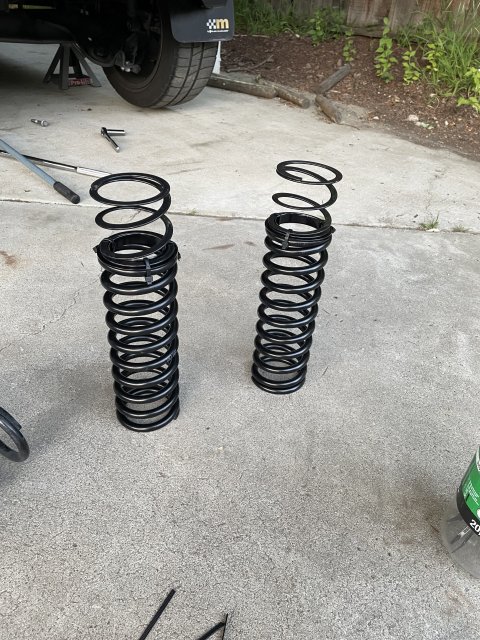
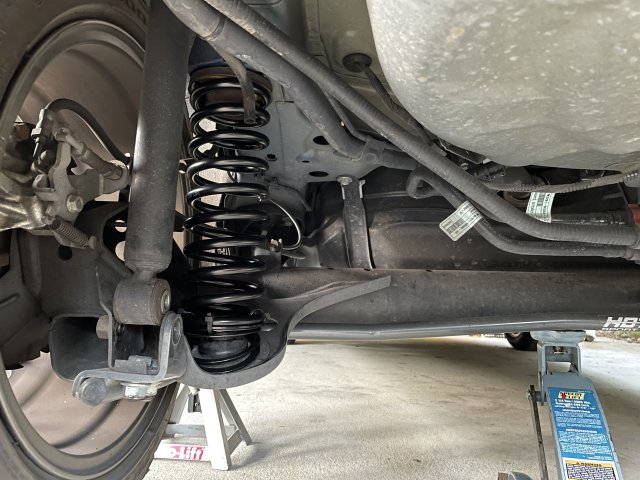
The front springs turned out to require a little more creativity. Good news is that even though the coilover springs are ground flat, the bottom of the spring still fits into the stock coil isolator like a glove. Unfortunately the plastic top bearing is a little on the large side because of the taper. (Its ideally closer to 3.25” ID at the base) The 3.0” ID helpers I bought are too small so I had to come up with something else. The gap turned out to be small enough that you can just use a spacer instead of a helper. It helped to be able to mock them up on the stock struts that are off the car:
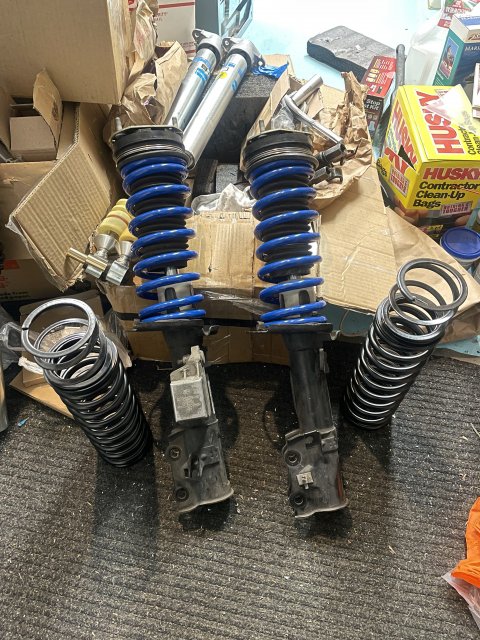
While I could have just machined a custom spacer, I really wanted this to be something anyone could put together. So of course, being in a hurry to prep for my trip, I just ordered some random cheap crap off amazon about the right diameter. The final result that fit in was a cheap roller thrust bearing plus a thick rubber gasket ring from a 3” camlock hose fitting (used in the food industry for piping such wonderful things as honey, beer and other random liquids). The bearing is not really necessary for rotation, it just happens to be a spacer that fits.
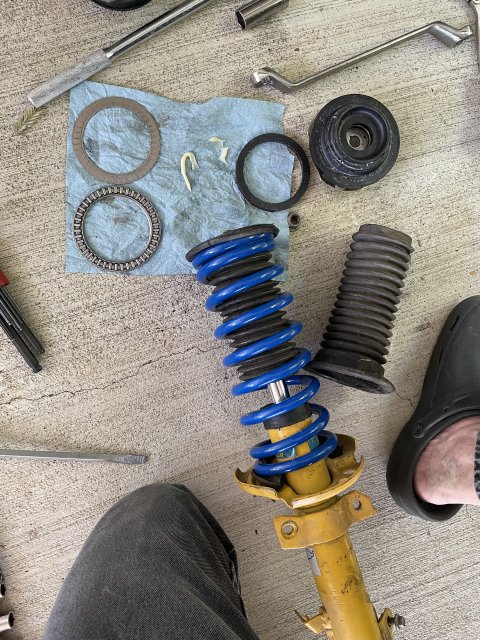
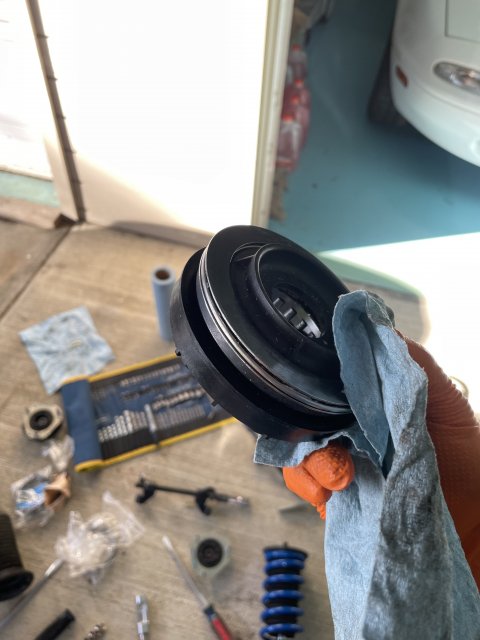
On the rubber gasket it remains to be seen how well it will hold up, or if it will eventually just split. A poly spring isolator with a 3.25” ID would be ideal, but it seems like none of the generic ones fit and none of the application specific ones list dimensions.
Between the two, it spaced off the 10” front spring just enough to seat snugly around the stock isolator/boot, and achieved slightly more than the thread length of the top nut of preload in the spring, which seems to be just enough preload to keep it firmly in place. I’m guessing around 50-60 lbs. Light preload is actually a good thing for an offroad setup - and also ride quality on the road, but first important thing is it works. Bonus points for being able to put the strut together by hand without using the spring compressor required for taking apart the stock struts.
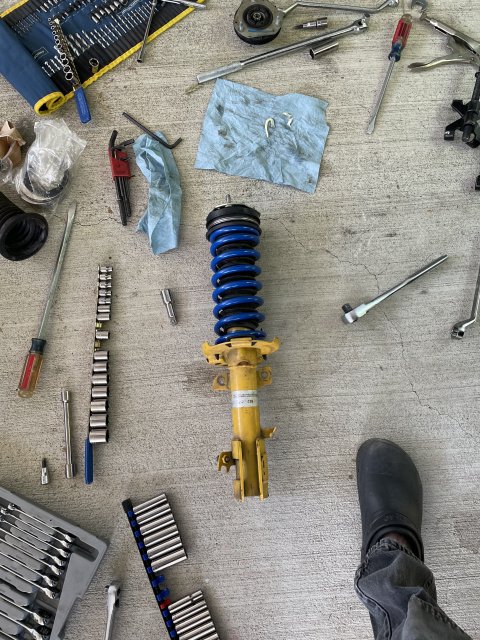
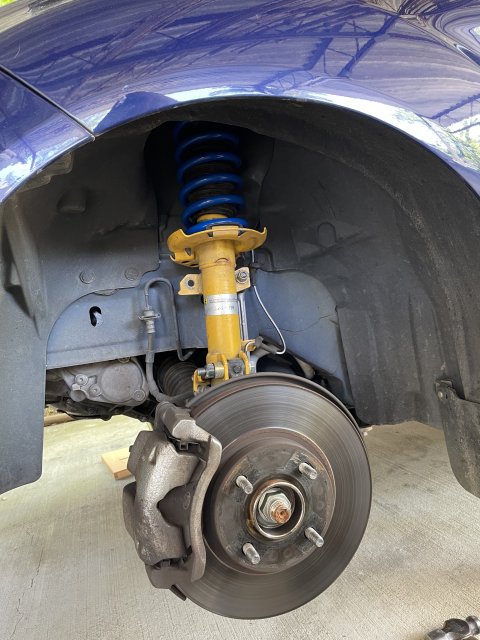
Once the front struts are assembled, simply bolt them in place (using new hardware ideally). I went the sketchy route of sharpie marking the locations of the existing stretch bolts on the head and nut, and reinstalling them as closely as possible to the original locations (after torquing to the factory pre-install spec), mostly because I’m going to remove them again in the next month to test out my future setup. On the top I’ve used H&R Triple-C camber bolts, which are reusable. I eventually want to find a reusable set of Class 12.9 lower strut bolts so I can swap out the struts without throwing away gobs of stretch bolts, as I’m thinking about keeping this setup to run seasonally for the ground clearance.
Initial impressions are extremely positive! So far I’ve only tested on the snow tires, but the ride is fine and not too bouncy (note, I have some used B6’s in the front, but still stock struts in the rear). The car felt much more planted on the soft snow tires than it did with the stock springs, especially in the dirt. Paved and highway driving was actually pleasant. I only tested up to about 25-30mph on the dirt roads (which still actually feels kind of fast when you have to keep an eye for road hazards and sharp rocks/baby’s heads) - it was a special access event on a state park “ranger” road that’s normally closed, so everyone was asked to keep under speed to limit dust and road damage. I’m cool with that being more important than “rally dreams”.
Once I have a chance I’ll swap back to my 200TW street tires and get some additional impressions. Eventually I want to switch to B6’s in the rear, but they’ve been hard to get a hold of, especially used.
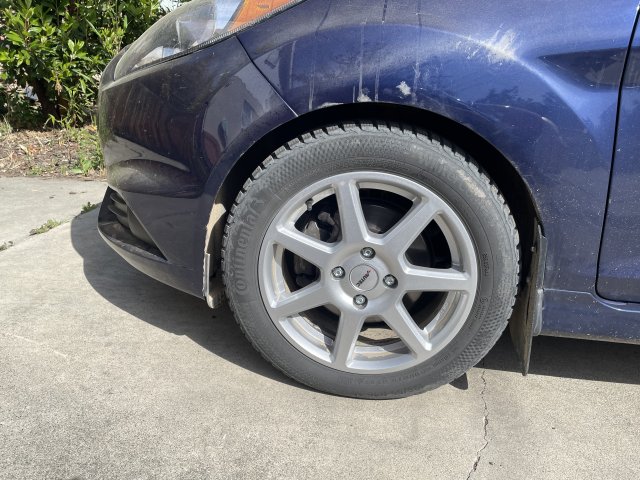

If I find some used B6 rears, I may test out going to stiffer 250/225 rates to raise the car a little more (about 0.3” by the math) and see how it handles, or maybe just put in some taller powerflex spring isolators in the rear and add the helpers back in the front. (If anyone has just the rear B6’s lying around unused and wants to get rid of them, let me know!. I might also consider trading this complete setup, including the springs installed on the front B6 struts in exchange for a full used set of B6 shocks/struts). Who knows.
As a note, in the end, I've measured 4.75" of clearance to the bottom of the Pierce 2-point, which will eventually be swapped for a Swave-Summit 4 point and maybe a skidplate.
I also drove by a base model Fiesta the the other day and caught a glimpse of the fender heights, and there’s definitely some serious fender-gap in the rear so there's plenty of room to lift in the rear.
Lastly, a glamor shot my wife took:
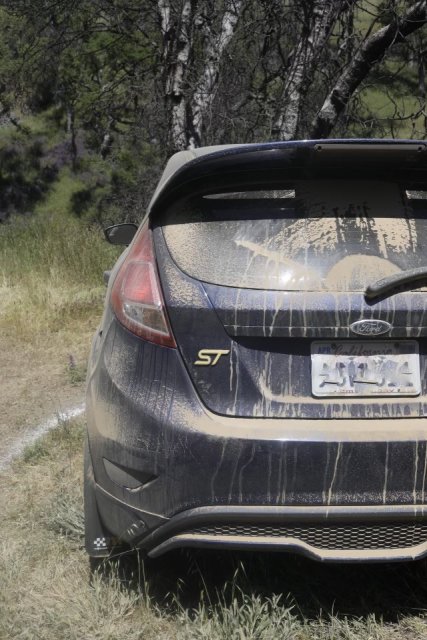
 . Just something to look out for.
. Just something to look out for.

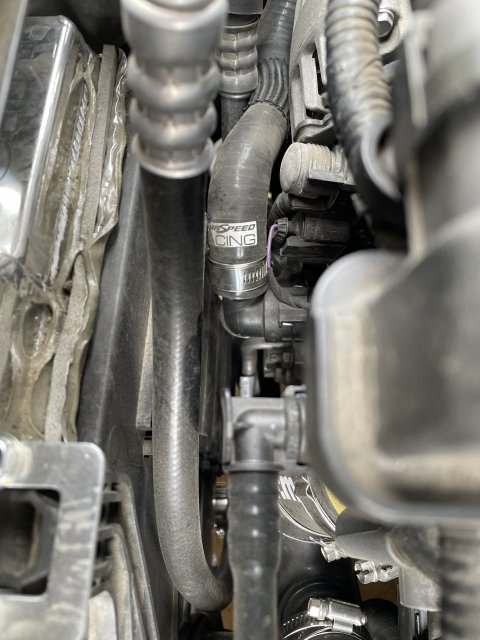
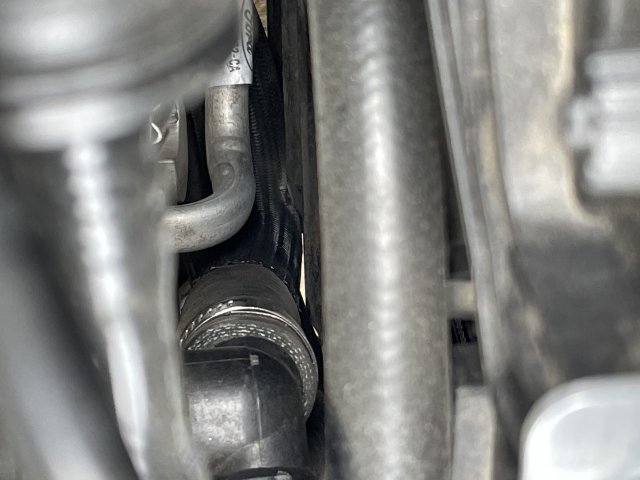













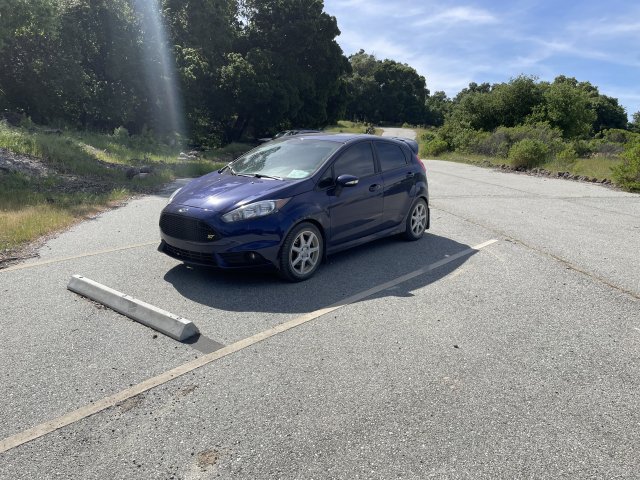
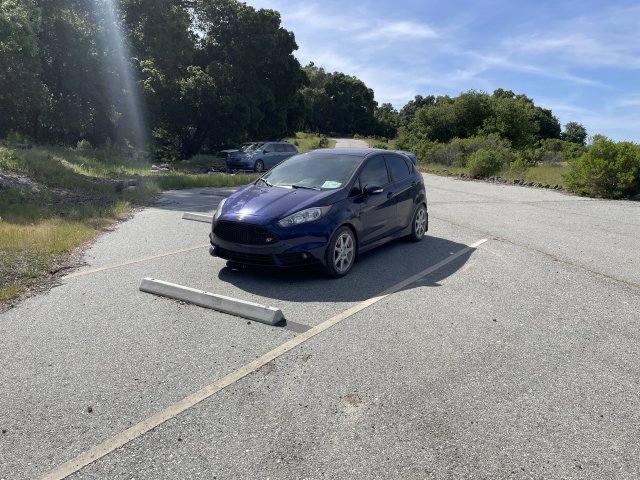
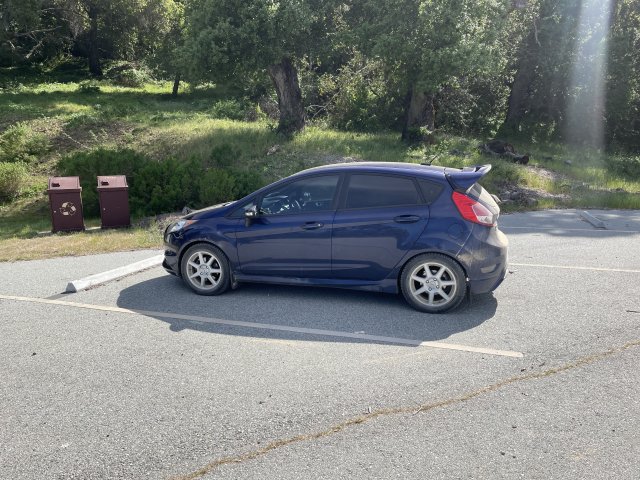
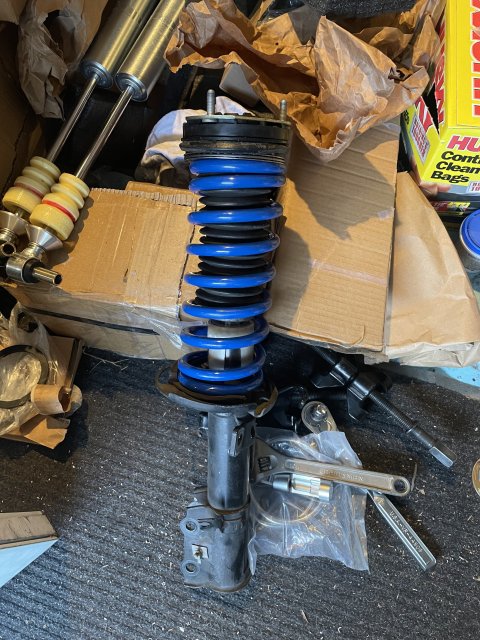
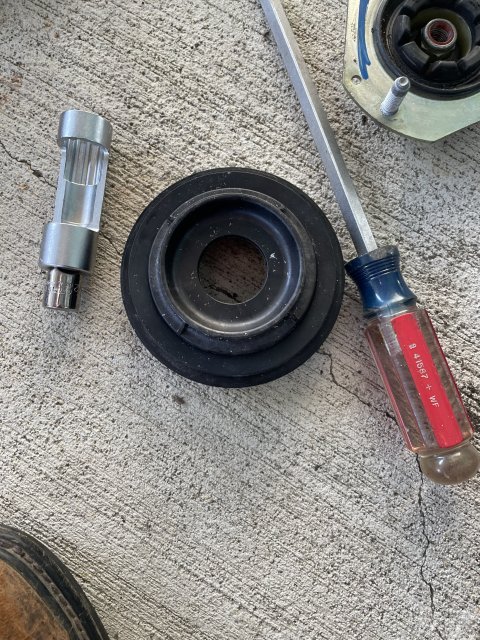
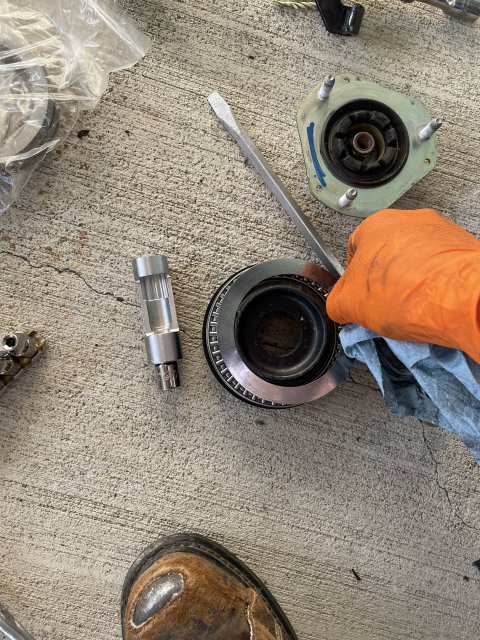
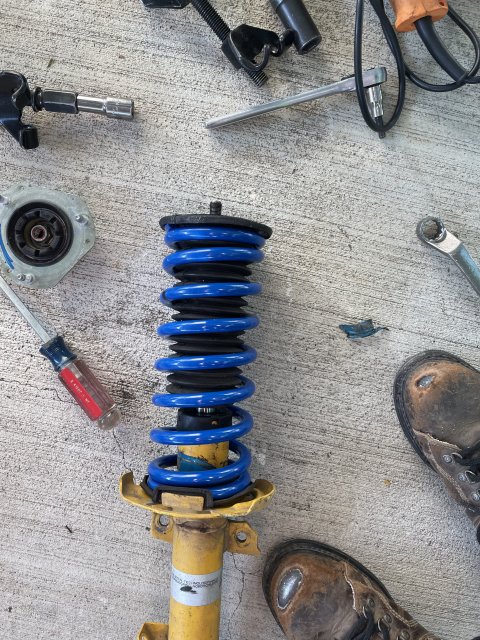
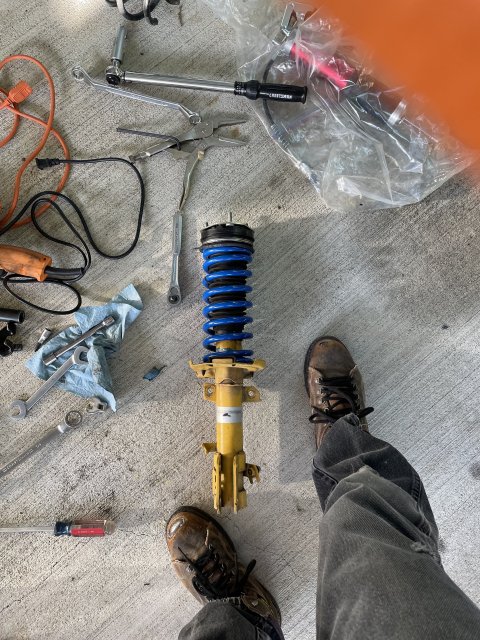
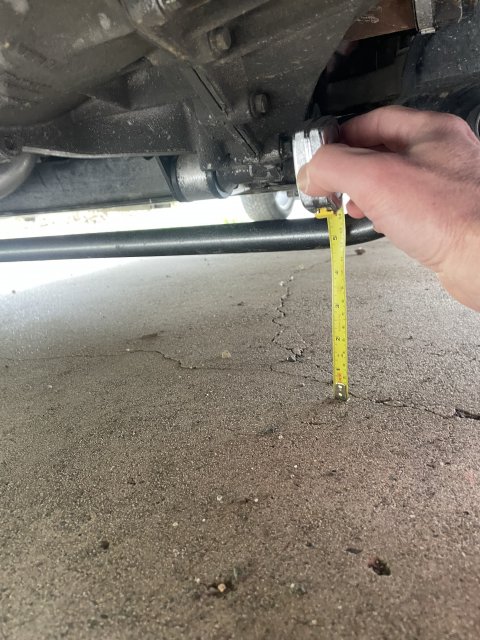

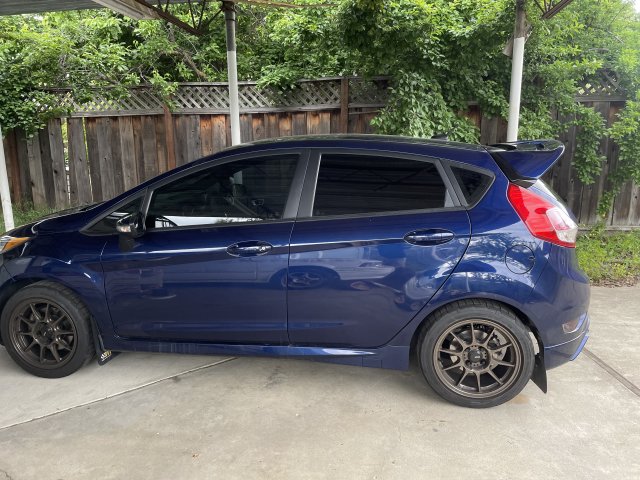

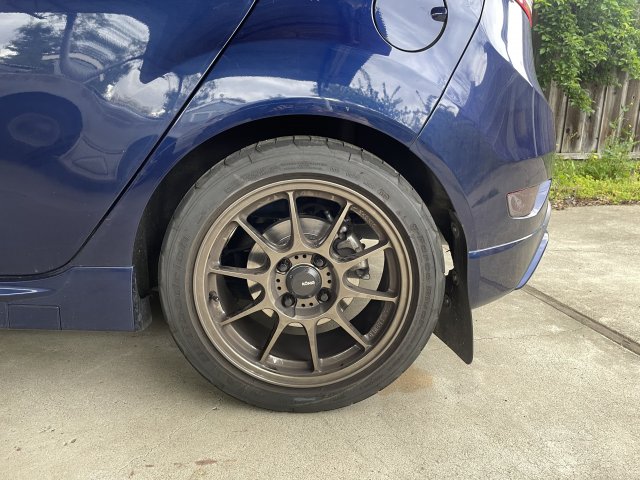
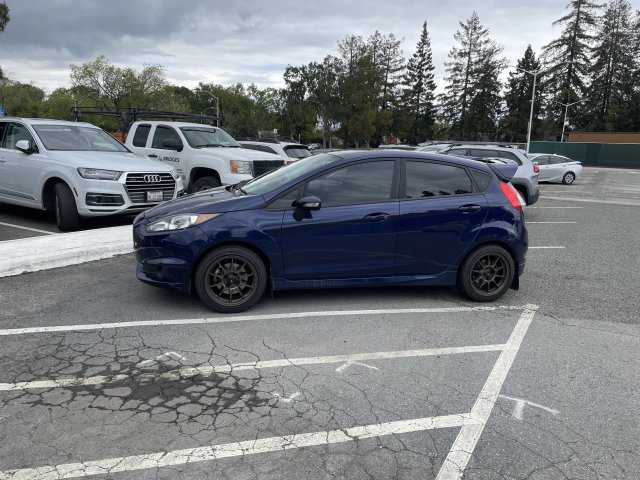
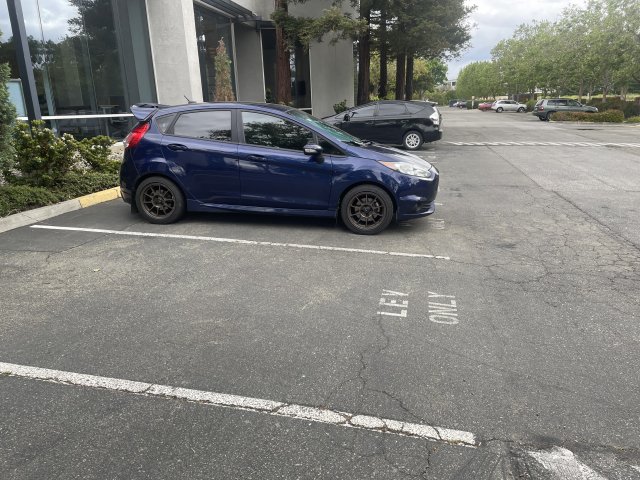
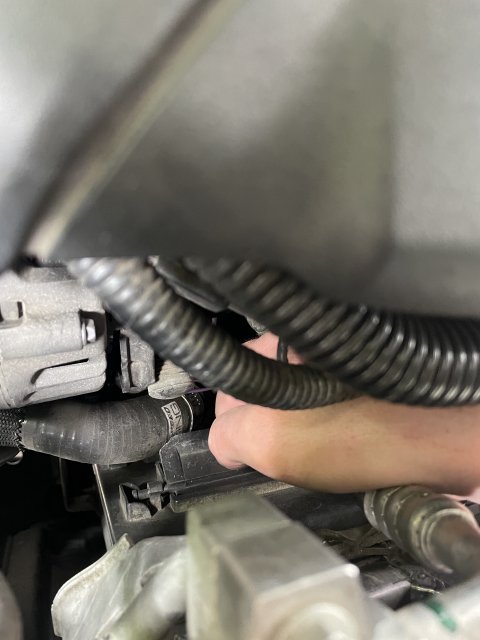
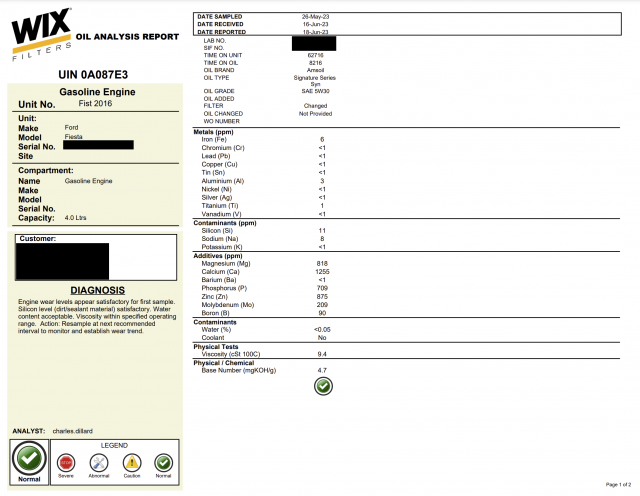
![Wink [wink] [wink]](/images/smilies/wink.gif)